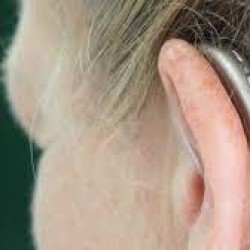Why have you heard that chocolate is saluted (but it really is not)
I wish it were that way, because personally I love chocolate the way anyone likes it with functional and well-taught taste buds. That the chocolate was healthy for the heart, it would fight the aging and the diseases that derive from it and, if possible, make us smarter, taller and more beautiful.
Many myths revolve around chocolate , sometimes based on popular culture and sometimes on scientific studies that are biased, misinterpreted or titled in an attractive but incorrect way. The key is what exactly chocolate is.
 It’s not chocolate, it’s cocoa
It’s not chocolate, it’s cocoa
To explain, let’s forget about chocolate for a moment and go to cocoa, a plant species ( Theobroma cacao ) that lives in Central America. In its origins, it was not a sweet food , but it was used in salty dishes or to make bitter drinks. It was the Europeans who, when they imported cacao during the conquest of America, devised new recipes in which they turned it into desserts and sweets.
For this, among other things, the cocoa product is usually mixed with milk, sugars and fats . And here’s the key: while cocoa has certain properties and components that are considered beneficial to health, those sugars and fats make chocolate, depending on the specific composition of each but almost in most cases, more harmful than healthy .
In fact, they are molecules within cocoa
The key seems to be molecules called flavonoids , molecules that are found in a variety of plants, including the fruit of cocoa.
Several studies indicate that these compounds have beneficial effects on the cardiovascular system, since they help to dilate blood vessels and thereby reduce blood pressure. They also reduce the oxidation rates of bad cholesterol and platelet aggregation, thus preventing the formation of thrombi.
Recent studies also suggest that these molecules have beneficial effects on our cognitive abilities , improving memory and processing speed, among other things, especially in people at risk, such as those who are older or those who suffer from early dementia.
The problem is that in the process that cocoa seeds undergo until they become the tablets and chocolate products that we usually consume, in which they are heated, boiled and crushed, most of the flavonoids contained in the first ones are lost. , which largely eliminates these beneficial effects.
Cocoa (and its flavonoids) are bitter
The key is the taste . Some chocolate producers have developed production processes that try to avoid the destruction of flavonoids, and chocolates with a high cocoa content also have more content of these molecules.
But those results do not necessarily resemble what most consumers like about chocolate : its sweetness, its creaminess … Most chocolate products have a low content of cocoa, and therefore flavonoids, and a high content of sugars and fats . The palm takes the white chocolate, which should not even be called chocolate because in fact it contains absolutely no cocoa.
Does this mean that you should not eat chocolate?
No, what you mean is that you should not eat chocolate thinking it is a healthyfood. It is important that you are well informed when feeding so that you make decisions knowing its consequences.
Yes it is possible to draw some useful conclusions when choosing which chocolate you want to eat. The main one is that you look for chocolate with a higher possible cocoa content , since this way you will enjoy greater beneficial properties and, in passing, a taste more similar to the original, renouncing added sugars and fats.


